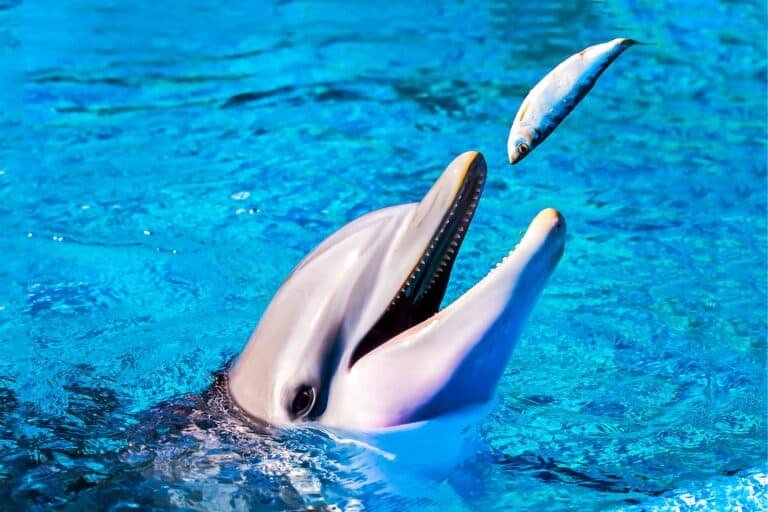
Here’s the thing: understanding a spinner dolphin’s diet is not only fascinating but essential. It reveals how these animals interact with their environment, the other creatures they depend on, and even the health of our oceans. As we dive into their feeding habits, you might start to see these lively mammals in a new light—one that goes beyond mere entertainment and into the realm of ecological importance.
What Do Spinner Dolphins Eat?
Spinner dolphins are primarily carnivorous, meaning their diet consists mainly of fish and squid. However, they don’t just munch on anything that swims past. Their choices are influenced by what’s available in their habitat at different times of the day and season.
These dolphins are known to be quite selective eaters. They enjoy a variety of fish species, including anchovies, mackerel, and sardines. Imagine heading to your favorite restaurant and seeing a seasonal menu—it’s a bit like that for dolphins! They adapt their diet based on what’s plentiful, which helps them thrive in various ocean environments.
One interesting aspect of spinner dolphins’ diets is their foraging behavior. They often hunt in schools, using sophisticated techniques to catch their prey. Sometimes, they’ll even work together, creating a sort of underwater team to herd fish into tighter areas, making it easier to feast. Isn’t that neat?
How Do Spinner Dolphins Catch Their Food?
So, how exactly do these clever creatures go about catching their meals? Most commonly, spinner dolphins use a method called “cooperative hunting.” This means they team up with others in their pod to increase their chances of success. You might picture a group of friends working together to tackle a big project—it’s similar, but under the ocean waves!
Another fascinating technique is their use of echolocation. Imagine walking through a dark room and using sound to find your way. Spinner dolphins emit clicks and listen for the echoes that bounce back, helping them locate schools of fish or even the depth of the ocean floor. This ability not only helps them find food but also navigate through murky water.
Additionally, spinner dolphins sometimes engage in “spectacular feeding,” where they burst through the surface after chasing their prey, creating an impressive splash. Watching this can be like witnessing a high-energy dance performance, showcasing their agility and strength.
The Role of Social Structure in Feeding
The social structure of spinner dolphins plays a huge role in their feeding habits. These dolphins typically live in groups called pods, which can range from a few to hundreds of individuals. Within these pods, there’s often a level of cooperation and communication that enhances their hunting success.
You might be wondering how this works. Well, when dolphins communicate through clicks and whistles, they can coordinate their movements during a hunt. Think of it like a choreographed dance where everyone knows their part. This teamwork not only makes it easier to catch food but can also help protect young or ill members of the pod.
Additionally, social bonds can impact feeding success. Stronger relationships within the pod can lead to more effective hunting strategies, making it a win-win for everyone involved. It’s a beautiful example of how social dynamics in the animal kingdom can directly influence survival.
Feeding Behavior: Day vs. Night
Spinner dolphins exhibit different feeding habits during the day versus the night. During the day, they tend to stick closer to the surface, catching light-sensitive fish that swim near the top. This is akin to enjoying an early bird special—taking advantage of the best feeding times when conditions are right.
At night, however, their behavior changes significantly. Spinner dolphins dive deeper, targeting squid that rise to the surface to feed on plankton after sunset. It’s as if they’re flipping the script and saying, “Let’s go for the late-night snack!” This adaptation allows them to exploit different food sources effectively.
This change in feeding patterns is an essential survival tactic, ensuring they receive balanced nutrition and can thrive in various oceanic conditions.
The Impact of Environmental Changes on Their Diet
Environmental factors play a significant role in the spinner dolphin’s diet. Changes in ocean temperature, pollution, and overfishing can directly impact the availability of their preferred food sources. For instance, warming ocean waters can shift fish populations to cooler areas, making it harder for spinner dolphins to find their meals.
You might equate this to a restaurant changing its menu unexpectedly. If a beloved dish is no longer available, diners—just like dolphins—might have to adapt their tastes or search elsewhere. This adaptability is crucial for spinner dolphins, as reliance on a limited food source can lead to nutritional stress and decline in their populations.
Additionally, pollution can harm the delicate ecosystem these dolphins rely on. Contaminants in the water can accumulate in fish and squid, posing health risks not just to the dolphins but to the entire marine food web. It’s a reminder of how interconnected our world is and why protecting marine environments matters.
Understanding the diet and feeding habits of the spinner dolphin isn’t just about what they eat; it’s about grasping their role in the marine ecosystem. These dolphins are indicators of ocean health, and any changes in their diet can have ripple effects throughout their environment.
By learning about their eating behaviors, we can appreciate the challenges they face due to environmental factors. It reminds us of our responsibility to protect our oceans and the creatures that inhabit them. So next time you hear about spinner dolphins, you’ll know there’s so much more than meets the eye—there’s a complex world of food, teamwork, and survival hidden beneath the waves.

